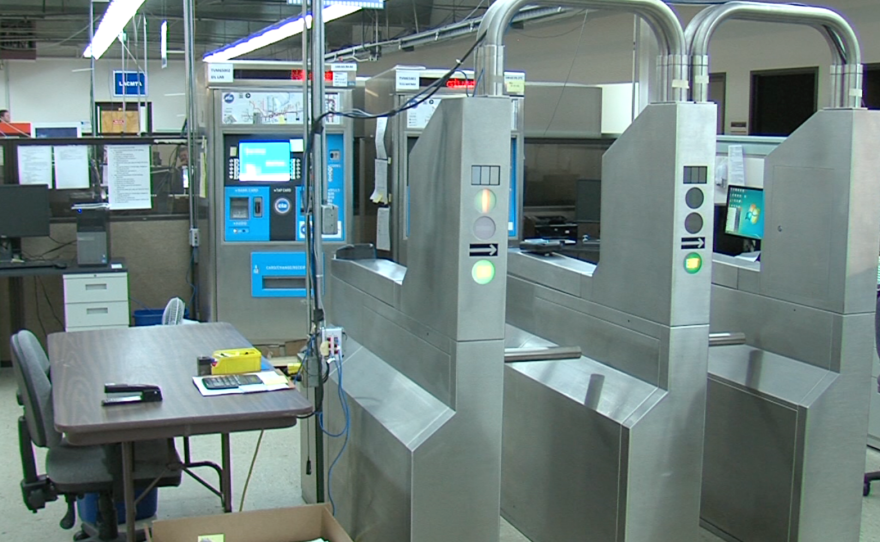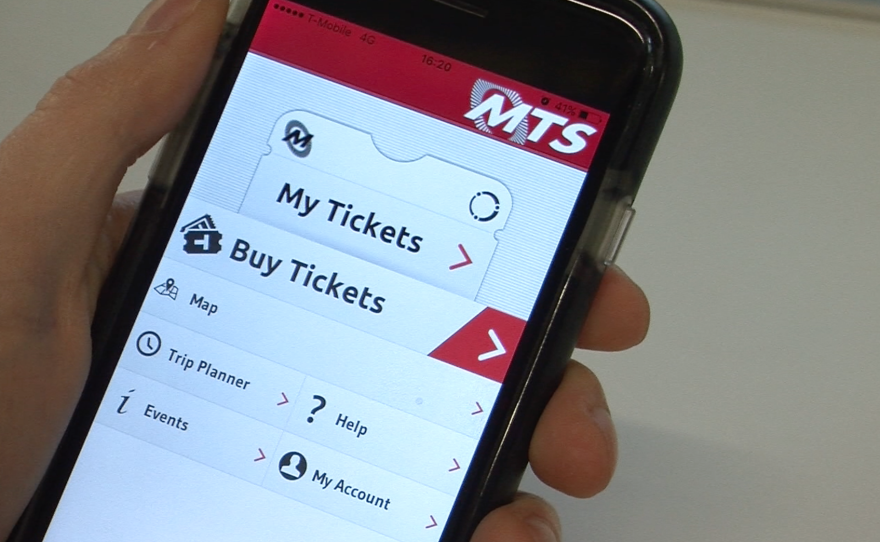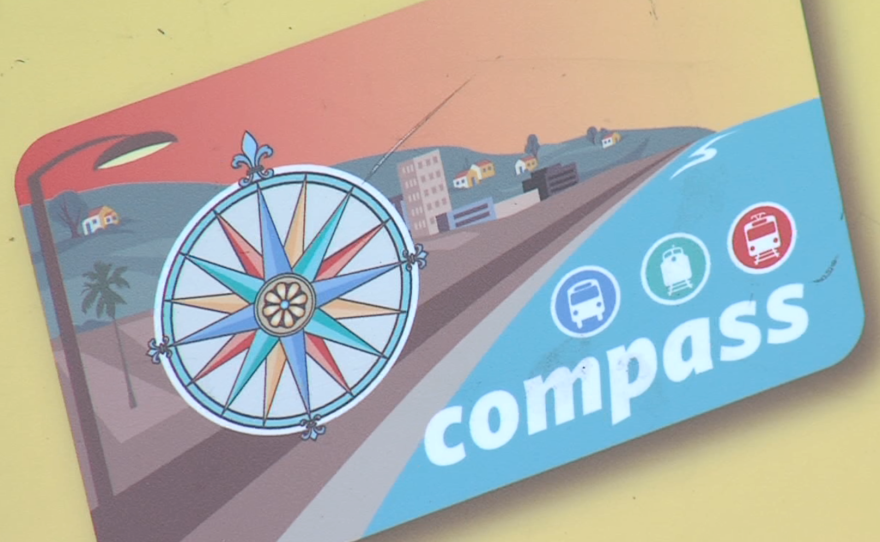Chelsea Klaseus has a relatively easy commute from her home in Sherman Heights to her job as an environmental specialist with the city of San Diego in Kearny Mesa. Traffic going north on Interstate 15 is usually manageable, and she gets free parking at work.
Once in awhile, Klaseus ponders taking public transit. But the trip is daunting.
“I would have to be on the bus by 6:30, and I would get to work about a half hour early,” she said. “There’s no middle ground. So it would take about an hour to get to work — if the bus is on time.”
Urban sprawl is one of San Diego’s greatest challenges in providing fast, efficient and affordable alternatives to driving. Because Sherman Heights to Kearny Mesa is not a popular commuter route for the Metropolitan Transit System, a direct and frequent bus route would have to be heavily subsidized.
But while commuting to work on the bus may be prohibitively inconvenient, Klaseus does occasionally take MTS when going downtown, or to the Mexican border. That’s where the system’s fare collection system leaves her behind.
“The Compass Card doesn’t make sense for me,” Klaseus said.
A ‘smart card’ that’s not so smart
The Compass Card is a smart chip card available to MTS and North County Transit District passengers for daily, multi-day and monthly transit passes. One feature conspicuously absent from the card is “stored value” — passengers cannot load virtual money onto the Compass Card and use it for single rides.
Stored value cards have existed in some form for decades, and they’re now a feature nearly every other large transit agency in America offers. Cities from Jacksonville, Florida, to Spokane, Washington, have recognized stored value as a way to make riding transit as convenient as possible.
Cities with more ambitious (and better funded) transit agencies have gone even further. London’s Oyster Card offers a feature called “capping,” which tracks a passenger’s fares throughout a 24-hour period and automatically charges for a day pass if the passenger has paid the equivalent fare in single rides. The Oyster Card was developed by the San Diego-based Cubic Corp., which also developed the Compass Card.

Stored value tends to benefit “choice riders” — people who may own a car but choose to ride public transit on occasion. Currently, such riders have to pay their single-ride fares of $2.25 or $2.50 with exact change in cash.
Monique Lopez, policy advocate for the nonprofit Environmental Health Coalition in National City, said something as simple as not having that exact change can easily sway a would-be choice rider’s decision in favor of driving.
“We live in an era in which convenience is important to folks,” Lopez said. “Providing opportunities for folks to be able to make a choice that’s just as convenient as putting your key in your car would be huge. And we’ve seen that success in other cities.”
San Diego recently passed its Climate Action Plan, which pushes the city to reduce greenhouse gas emissions by half and get half of San Diegans living near transit to commute to work without a car by 2035. Lopez said if those goals are to be met, MTS has to make it easier for people to choose transit.
“There’s a lot of people in the millennial generation who want to make that choice,” she said. “Stored value will make it much easier for people to live a multi-modal lifestyle.”
Why the delay?
A July 2007 e-newsletter from the San Diego Association of Governments, the planning agency for MTS, listed stored value as one of the future options planned for the Compass Card, though it does not mention a deadline.
In an interview with KPBS in 2013, MTS CEO Paul Jablonski said MTS had “all the system in place to be able to put a stored value card in the system right now,” and that he hoped “by late summer, fall, we’re going to roll out stored value.”

When asked recently why stored value was still not an option on the Compass Card, Jablonski said that in 2013 he was confident it would happen, but MTS ended up giving priority to other projects: replacing old electrical lines and upgrading its fleet of buses and trolley cars.
“I think if you go out here and you look at any bus that’s operating, it’s in good condition, it’s very reliable and it’s very clean,” he said. “I think we’re focusing on the right things. I wish we were further along in fare collection, but we’ve had a lot on our plate.”
MTS spokesman Rob Schupp said in an e-mail that previous cost estimates for adding stored value to the Compass Card ranged from $50,000 to more than $100,000. But he cautioned that those figures did not include the necessary marketing costs and a simplification of the fare system.
Next generation of fare collection
Jablonski said MTS wants to invest more in the next generation of technology, which is outpacing smart cards. To that end, MTS is planning an expansion of its mobile phone ticketing program, currently limited to trolley-only day passes during special events such as Comic-Con or select sports games.

A revamped smartphone app will have the capability of selling all MTS fare types without the need for a Compass Card, Schupp said. MTS plans on getting board approval for a contract with a developer in March, and the app’s development should take three to four months.
But while the new app would be capable of selling tickets, Schupp declined to give a date for when that capability would be made available for everyday use.
Klaseus, while driving to work, lamented her own dependence on her car and said she wished MTS made riding easier.
“To be able to have multi-modal transit options is going to take a lot of innovation,” she said. “But I don’t think that should be very hard, considering there’s a lot of great examples out there.”







